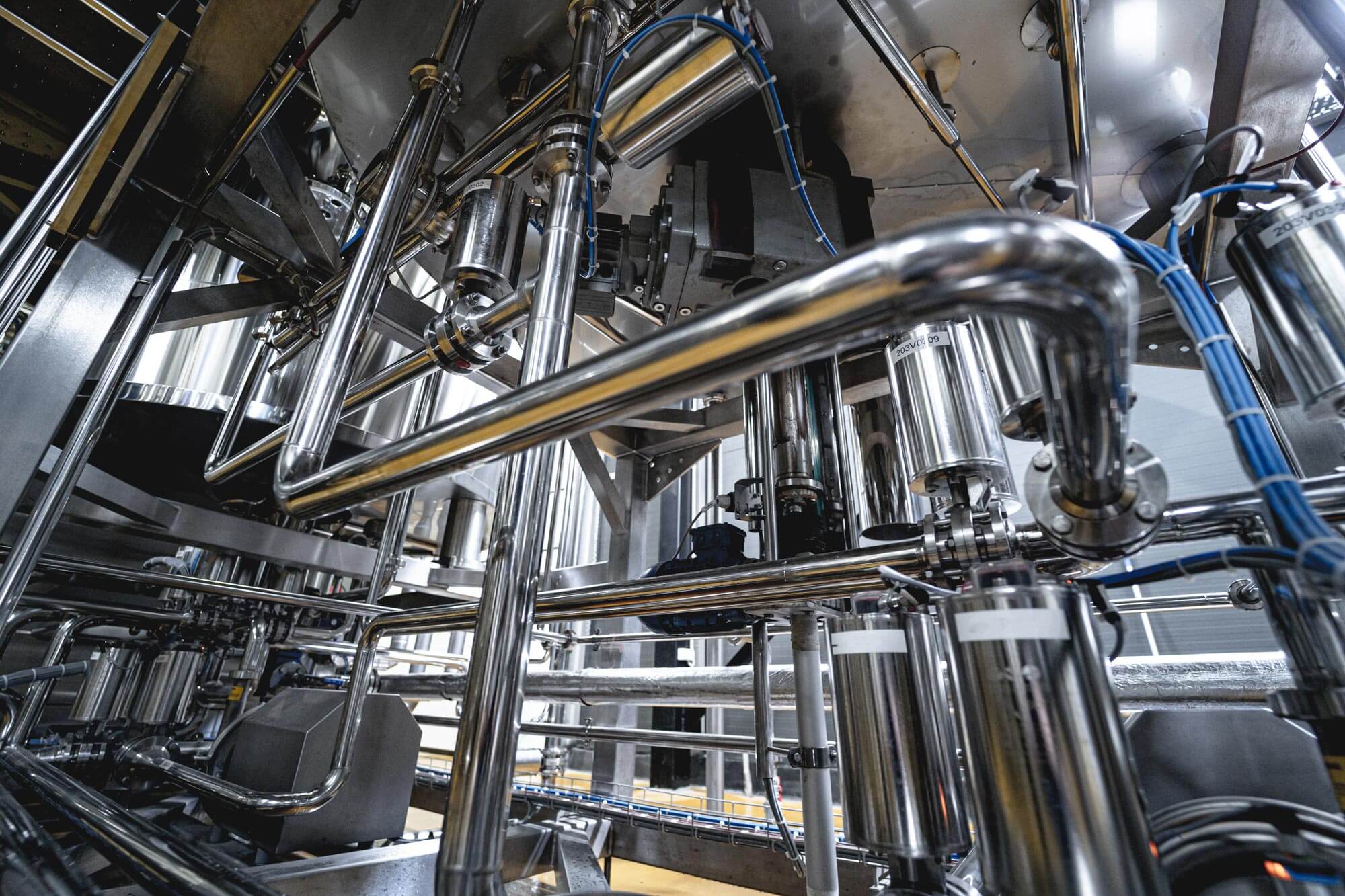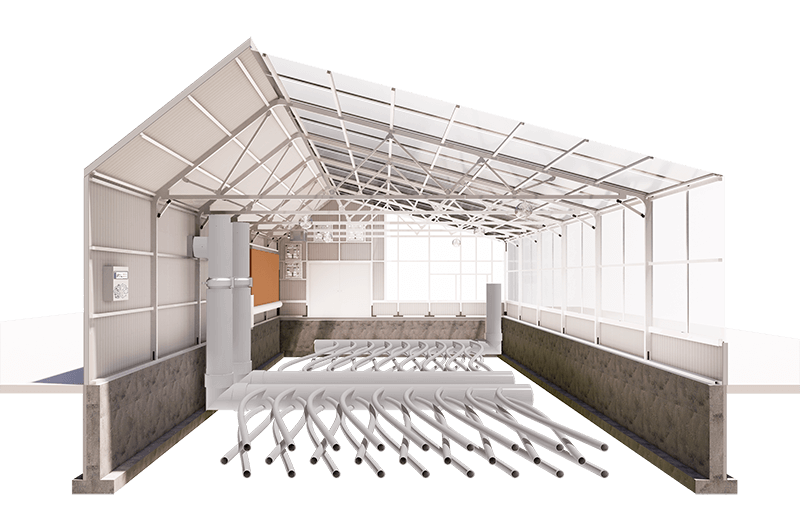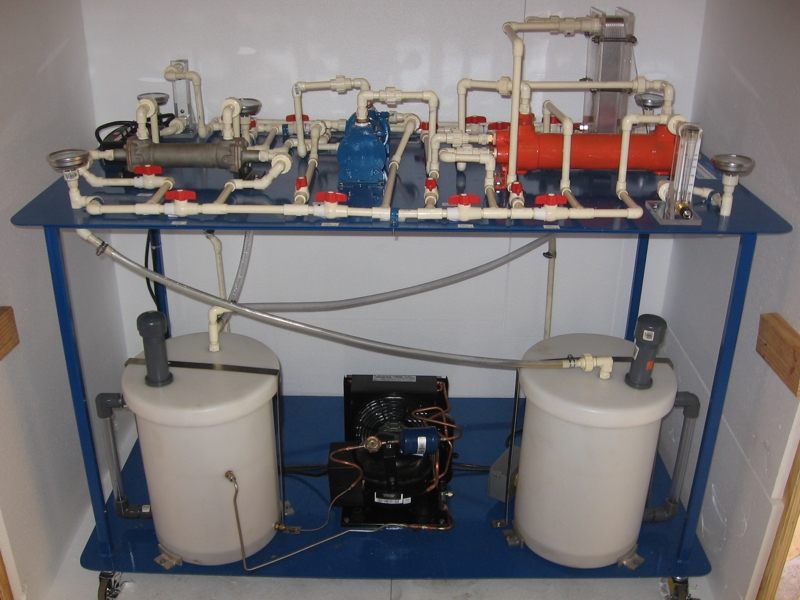Exploring Advanced CFD Modeling in DVS Heat Transfer Systems
Wiki Article
Advancements in Heat Transfer Systems: What You Need to Know for Optimum Performance
Innovations in Heat transfer systems are transforming performance throughout different industries. Advanced products like graphene and nanofluids promise substantial enhancements in thermal conductivity. At the same time, the combination of IoT and machine understanding provides possibilities for real-time monitoring and boosted power efficiency. Nevertheless, the landscape of thermal administration is quickly evolving (DVS Heat Transfer Systems). Comprehending these advancements is necessary for accomplishing perfect system efficiency and sustainability in the future. What certain developments are shaping this transformation?Arising Products for Boosted Heat Transfer

Advanced Heat Exchanger Layouts
While typical Heat exchangers have actually served their purpose in various applications, advanced styles are currently emerging to meet the increasing demands for efficiency and efficiency. These innovative designs, such as plate, shell-and-tube, and finned-tube Heat exchangers, include boosted area and improved flow patterns to enhance thermal transfer rates. On top of that, small designs permit decreased space demands without compromising efficiency. Advanced products, such as compounds and corrosion-resistant alloys, in addition improve toughness and efficiency under extreme problems. Simulation innovations and computational liquid dynamics are increasingly used to refine these styles, ensuring peak Heat transfer features. As markets seek to lessen power usage and make the most of outcome, the fostering of sophisticated Heat exchanger designs is pivotal in accomplishing these purposes.The Duty of Nanotechnology in Heat Transfer
Nanotechnology plays a vital duty in enhancing thermal conductivity within Heat transfer systems. By adjusting products at the nanoscale, scientists have actually accomplished significant enhancements in energy effectiveness. These improvements not only enhance performance yet also add to more sustainable energy options.Improved Thermal Conductivity
Significant innovations in thermal conductivity have arised via the application of nanotechnology, transforming Heat transfer systems across different sectors. By including nanoparticles into Heat transfer fluids and materials, scientists have actually accomplished amazing increases in thermal conductivity. These nanoparticles, such as carbon nanotubes, graphene, and metal oxides, improve the Heat transfer properties due to their high surface and one-of-a-kind thermal features. The resulting compounds exhibit improved performance in applications ranging from electronic devices cooling systems to eco-friendly energy technologies. The ability to customize the dimension, form, and make-up of nanoparticles permits for optimized thermal management services. Because of this, nanotechnology remains to play a critical role in the development of more efficient and reliable Heat transfer systems, leading the way for boosted industrial applications.
Energy Performance Improvements

Assimilation of IoT in Heat Transfer Systems
The integration of IoT in Heat transfer systems presents the application of wise sensing units that improve operational performance. These sensing units allow real-time data monitoring, permitting for instant changes and optimizations. This technical advancement has the prospective to significantly enhance performance and energy monitoring in Heat transfer applications.Smart Sensors Application
As Heat transfer systems advance, the assimilation of smart sensing units with the Web of Points (IoT) has actually emerged as a transformative approach. These sensing units allow real-time tracking of flow, pressure, and temperature rates, improving system performance and dependability. By gathering and transferring information, they facilitate positive upkeep, decreasing the threat of system failures. Furthermore, wise sensing website link units contribute to energy savings by refining functional criteria based upon ecological conditions. Their ability to evaluate patterns and anomalies permits notified decision-making, making sure peak efficiency of Heat transfer systems. As markets significantly embrace this modern technology, the execution of wise sensing units stands to change exactly how Heat transfer systems are taken care of, leading the way for better sustainability and improved performance end results.Real-Time Information Tracking
How can real-time information checking boost the performance of Heat transfer systems? By incorporating Net of Things (IoT) modern technology, Heat transfer systems can leverage continual information collection from wise sensors. This real-time monitoring permits instant evaluation of stress, temperature, and circulation rates, allowing drivers to identify ineffectiveness without delay. Consequently, modifications can be made to enhance efficiency, minimize energy usage, and expand devices life expectancy. Additionally, predictive maintenance can be implemented, decreasing unexpected downtime and costly repair services. The capability to imagine performance metrics with dashboards enhances decision-making, cultivating a proactive approach to system blog management. Inevitably, real-time information monitoring not just improves functional effectiveness but likewise adds to sustainability objectives within industrial procedures.Power Performance and Sustainability Trends
Energy effectiveness and sustainability patterns are reshaping the landscape of Heat transfer systems, driving innovation and compliance across various industries. Organizations are progressively focusing on energy-efficient designs to minimize functional expenses and decrease environmental impacts. The assimilation of renewable resource sources is coming to be more common, allowing Heat transfer systems to operate sustainably while satisfying regulative requirements. Furthermore, developments in technologies and products advertise lower power intake and improve general performance. Lifecycle analyses are additionally acquiring grip, permitting business to review the environmental influence of Heat transfer systems from production to disposal. This focus on sustainability not only sustains corporate responsibility however also positions organizations competitively in a market where consumers progressively prefer environment-friendly remedies. Power performance and sustainability continue to be critical considerations for future advancements in Heat transfer modern technology.Developments in Thermal Management Solutions
While the demand for efficient Heat transfer remains to rise, advancements in thermal administration remedies are arising to address both efficiency and sustainability challenges. Advanced materials, such as stage modification materials and nanofluids, are being established to boost Heat transfer performance - DVS Heat Transfer Systems. These products boost thermal conductivity and enable better temperature law in numerous applications. Additionally, innovations like active thermal control systems are acquiring grip, allowing real-time modifications to handle Heat circulation successfully. These systems add to power cost savings and reduce the ecological effect of thermal processes. Furthermore, the integration browse around this web-site of IoT in thermal monitoring helps with tracking and predictive maintenance, making sure optimized efficiency and long life of Heat transfer systems. On the whole, these technologies represent substantial strides toward more lasting thermal management techniquesFuture Instructions in Heat Transfer Modern Technology
Emerging improvements in thermal management services signify a promising future for Heat transfer technology. Scientists are progressively concentrating on developing products with remarkable thermal conductivity and enhanced energy efficiency. Advancements such as nanofluids, which consist of put on hold nanoparticles, offer significant enhancements in Heat transfer efficiency. Additionally, the assimilation of wise products that adjust to varying temperature problems is gaining grip, permitting for more responsive and effective systems. The increase of additive manufacturing strategies is additionally enabling the design of intricate Heat exchanger geometries that optimize liquid circulation. In addition, the application of artificial intelligence algorithms is expected to reinvent the optimization of Heat transfer systems, helping with predictive maintenance and performance enhancement. Collectively, these developments are poised to change the landscape of Heat transfer innovations in different markets.
Frequently Asked Inquiries

How Do I Select the Right Heat Transfer System for My Application?
Picking the ideal Heat transfer system entails evaluating application requirements, including temperature level varieties, liquid homes, and effectiveness requirements. Analyzing system types, maintenance factors to consider, and cost-effectiveness likewise plays a crucial duty in making an informed choice.What Are the Maintenance Requirements for Advanced Heat Exchangers?
Maintenance needs for sophisticated Heat exchangers usually consist of regular inspections, keeping track of for leakages, cleaning of surface areas, and assuring ideal circulation rates. Adhering to manufacturer guidelines guarantees reliable procedure and extends the devices's life-span.
Just How Do Environmental Variables Influence Heat Transfer Effectiveness?
Environmental elements significantly affect Heat transfer performance. Variants in temperature, humidity, and airflow effect thermal conductivity and convective Heat transfer, inevitably influencing system performance and demanding consideration during the layout and operation of Heat transfer systems.What Safety And Security Specifications Relate To Heat Transfer Systems?
Safety and security requirements for Heat transfer systems commonly consist of standards from organizations such as ASME and ASTM. DVS Heat Transfer Systems. These standards address materials, design, and functional methods to assure reliability, performance, and protection against dangers in various applications
Exactly How Can I Repair Typical Heat Transfer System Issues?
Troubleshooting usual Heat transfer system issues includes inspecting for leaks, making certain proper fluid flow, evaluating insulation integrity, and validating temperature level differentials. Identifying these elements can assist maintain system efficiency and protect against additional problems.Nanotechnology plays a crucial role in improving thermal conductivity within Heat transfer systems. Substantial improvements in thermal conductivity have actually arised via the application of nanotechnology, revolutionizing Heat transfer systems across different sectors. Innovations in thermal conductivity via nanotechnology have actually paved the means for amazing enhancements in energy efficiency within Heat transfer systems. Energy efficiency and sustainability patterns are improving the landscape of Heat transfer systems, driving advancement and compliance across different sectors. The combination of IoT in thermal administration facilitates monitoring and anticipating upkeep, guaranteeing enhanced performance and durability of Heat transfer systems.
Report this wiki page